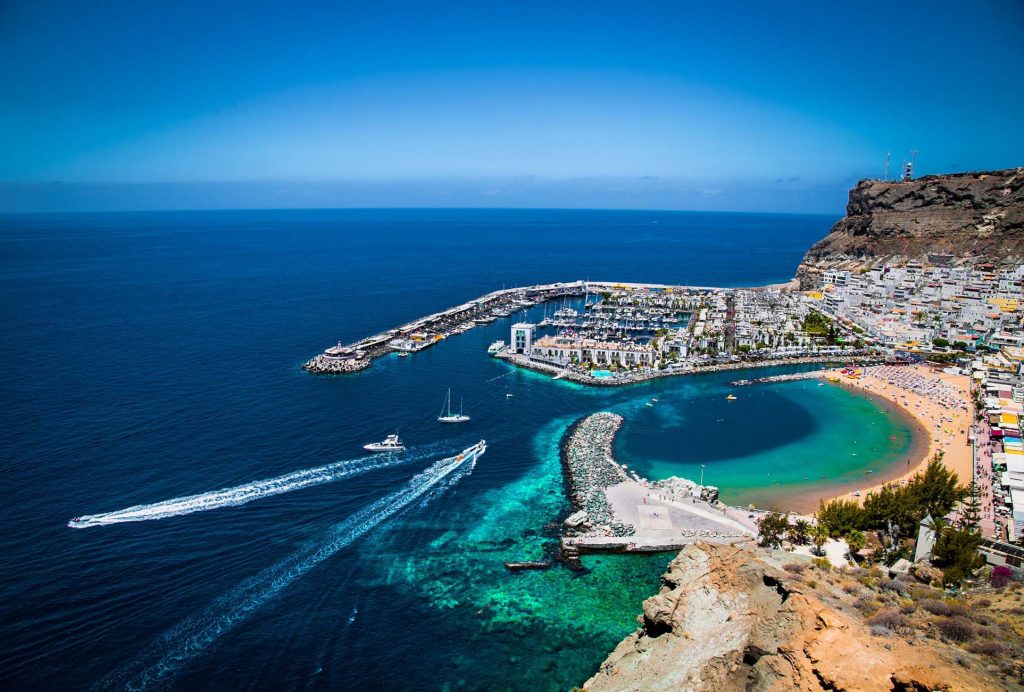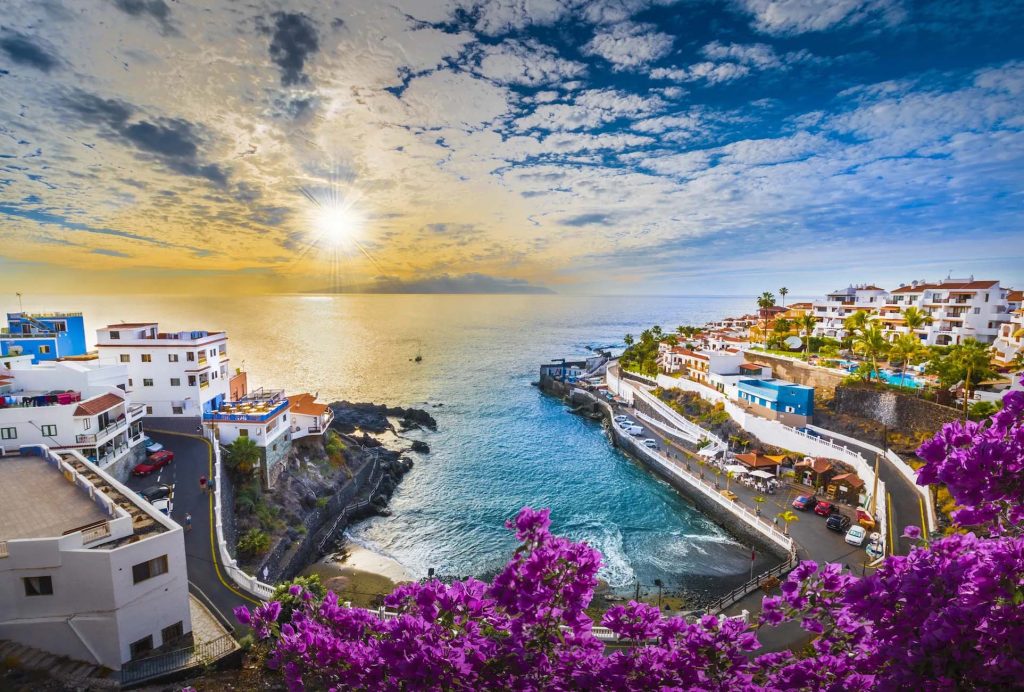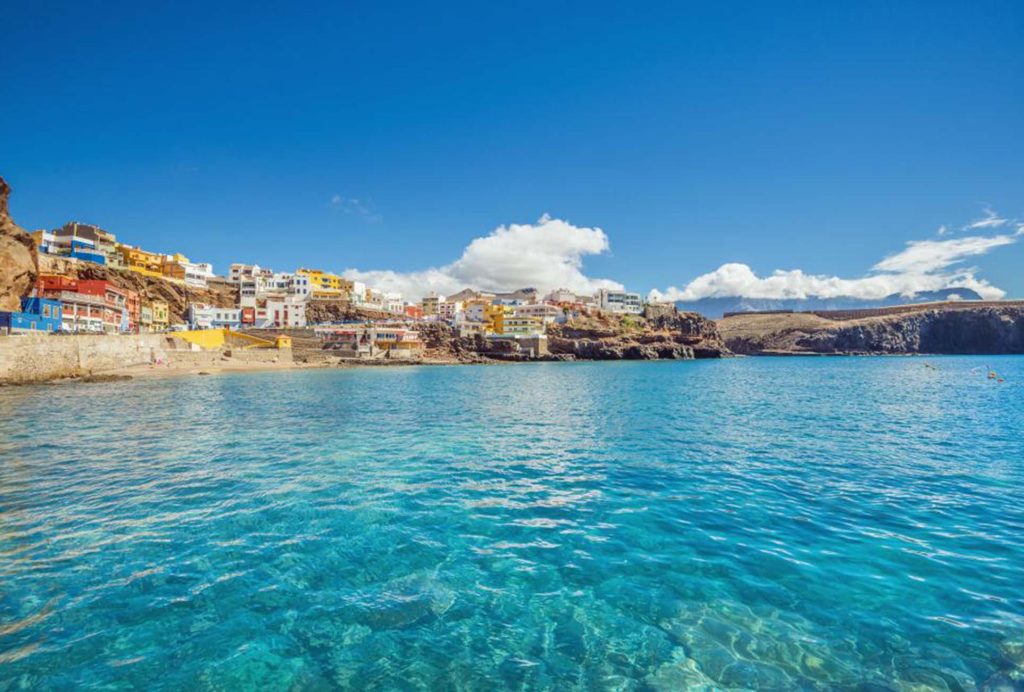Packing Essentials:
When preparing for a trip to the Canary Islands, packing essentials encompass a selection tailored to the archipelago’s unique climate and activities. Lightweight clothing forms the cornerstone of a traveler’s wardrobe due to the region’s predominantly warm and sunny weather. The breathable nature of fabrics like cotton or linen ensures comfort while exploring the islands’ diverse landscapes and engaging in various outdoor activities.
The inclusion of swimwear aligns with the abundance of stunning beaches and opportunities for water-based adventures. Whether it’s diving into the crystalline waters, indulging in water sports, or simply basking in the sun on the shoreline, having suitable swimwear ensures one can fully relish the coastal beauty of the Canary Islands.
Sunscreen stands as an indispensable item due to the islands’ proximity to the equator, resulting in strong and direct sun exposure. Applying sunscreen shields the skin from harmful UV rays, preventing sunburn and long-term skin damage, allowing travelers to explore comfortably without the worry of sun-related issues.
A hat is an additional layer of protection against the intense sun. Its brim provides shade, safeguarding the face, neck, and eyes from prolonged exposure to sunlight. This helps in preventing heatstroke and sunburn while maintaining a cool and comfortable journey throughout the day.
Comfortable walking shoes ensure ease of exploration across the varied terrain of the Canary Islands. From strolling along sandy beaches to navigating cobblestone streets in historic towns or trekking through natural reserves, supportive and comfortable footwear reduces fatigue and enhances the overall travel experience.
Lastly, a reusable water bottle is an eco-conscious and practical inclusion. The warm climate and physical activities can lead to increased dehydration, making it essential to stay hydrated throughout the day. Carrying a reusable bottle allows easy access to water, promoting sustainability while ensuring continuous hydration during outdoor adventures.
Local Attire and Weather:
The Canary Islands’ local fashion reflects the relaxed and laid-back lifestyle influenced by the warm climate prevalent throughout the year. Canarians typically embrace casual dressing to cope with the island’s balmy temperatures. The choice of clothing predominantly revolves around light and breathable fabrics, such as linen or cotton, which offer optimal comfort in the island’s tropical conditions.
These fabrics are favored for their ability to allow air circulation, preventing excessive perspiration and promoting a cooling effect on the skin, essential for navigating the sunny landscapes and partaking in outdoor activities.
Layering emerges as a clever strategy, especially for the occasional cooler evenings that might surprise travelers in January. While the overall weather remains mild during this time, there can be fluctuations, hence the necessity for a versatile wardrobe. Layering lightweight clothing enables adjustment according to the shifting temperatures throughout the day, ensuring comfort from the warmer daytime temperatures to the cooler nights.
Considering the potential variability in January weather, packing layers becomes a prudent choice. A combination of light sweaters, cardigans, or a thin jacket can come in handy for those occasional cooler evenings or if visiting higher altitudes where temperatures might drop slightly.
The emphasis on adaptable clothing choices reflects the need to cater to the diverse and sometimes unpredictable weather patterns in the Canary Islands, allowing travelers to comfortably enjoy the array of experiences the archipelago offers throughout their stay.

Cultural Insights:
When delving into the cultural tapestry of the Canary Islands, savoring local cuisine stands as an integral part of the experience. Embracing Canarian gastronomy unveils a glimpse into the region’s rich heritage. Delicacies like ‘gofio,’ a traditional flour made from roasted grains, or ‘papas arrugadas,’ wrinkled potatoes, paired with ‘mojo’ sauce, offer a flavorful immersion into the islands’ culinary legacy. Engaging in these dishes not only tantalizes the taste buds but also serves as a cultural exploration, highlighting the locals’ culinary traditions and their connection to the land and history.
In terms of travel gear and currency exchange, having a lightweight daypack proves invaluable for day trips across the islands. This convenient accessory allows travelers to carry essentials like sunscreen, water, a camera, and other necessities comfortably.
Travel Gear and Currency Exchange:
Regarding currency, the Euro is the official currency in the Canary Islands, widely accepted across establishments. Accessing local currency can be done through ATMs, which are readily available in major towns and tourist areas. It’s prudent to carry some cash for smaller purchases or places that might not accept cards. When exchanging currency, opt for authorized currency exchange spots or ATMs to ensure the best exchange rates and minimize additional charges.
Understanding these cultural and practical aspects not only enhances the travel experience but also fosters a deeper connection with the vibrant heritage and warm hospitality of the Canary Islands.
Navigating the Metro:
While navigating the Canary Islands, it’s essential to note the transportation options available. Although there isn’t a metro system, the archipelago boasts efficient alternatives like buses and taxis, catering to varied travel needs and preferences.
Buses emerge as a reliable and cost-effective means of traversing the islands. They offer extensive coverage, reaching most areas and connecting towns, cities, and tourist spots. The affordability of bus fares makes them an attractive option for budget-conscious travelers. Additionally, the well-structured bus routes and schedules provide convenience and accessibility for exploring different regions of the islands, making them an ideal choice for longer journeys or sightseeing tours.
On the other hand, taxis present a convenient but relatively more expensive mode of transport, especially for shorter distances or when seeking direct and expedited travel. While they may incur higher costs compared to buses, taxis offer comfort, privacy, and door-to-door service, making them preferable for travelers with specific time constraints or those desiring a more direct route to their destination.

The cost of transportation via buses varies depending on the distance traveled and the specific routes taken. Generally, bus fares are reasonable, with short-distance trips costing a few euros, while longer journeys might range from approximately €5 to €15, depending on the destination.
For taxis, fares are typically higher due to the personalized service and convenience they offer. Metered rates apply, with a base fare that varies across the islands, supplemented by additional charges for distance traveled or waiting time.
Understanding the nuances of transportation costs aids in planning and budgeting for travel within the Canary Islands. Opting for buses can be an economical choice for exploring various locales, while taxis provide a more convenient but pricier alternative, catering to specific travel requirements and preferences.
Metro Cards and SIM Cards:
Instead of metro cards, consider getting a ‘bono bus’ card for discounted bus fares. For a local SIM card, visit mobile service providers at the airport or major towns. It’s a cost-effective way to stay connected during your trip.
Planning a 5-Day Itinerary:
Day 1-2: Immersing in Historic Towns
Embark on an enriching journey through the historic towns of Santa Cruz de Tenerife and Las Palmas de Gran Canaria. These vibrant urban centers boast a tapestry of history and culture. Wander through cobblestone streets adorned with colonial architecture, delve into the past at museums showcasing the islands’ heritage, and peruse local markets teeming with artisanal crafts and fresh produce. This immersion into the heart of Canarian culture offers a captivating introduction to the islands’ rich heritage and contemporary life.
Day 3: Exploring Natural Wonders

Indulge in the awe-inspiring beauty of Teide National Park, a UNESCO World Heritage Site dominated by the majestic Mount Teide, Spain’s highest peak. Traverse volcanic landscapes, marvel at otherworldly rock formations, and breathe in the crisp mountain air while capturing breathtaking vistas. Alternatively, opt for a scenic boat tour along the coastline, revealing the islands’ stunning shores, hidden coves, and diverse marine life. This day promises a fusion of geological marvels and coastal allure, showcasing the natural splendor of the Canary Islands.
Day 4: Coastal Relaxation or Water Adventures
Savor a leisurely beach day along the pristine shores or plunge into thrilling water activities. Bask in the sun’s warmth, unwind on soft sands, and relish the rhythmic melody of crashing waves. For the adventurous souls, delve into the azure waters for snorkeling escapades, exploring vibrant underwater ecosystems, or ride the waves with exhilarating surfing sessions. This day caters to both relaxation seekers and adrenaline enthusiasts, offering a perfect blend of tranquility and excitement amidst the island’s coastal paradise.
Day 5: Unveiling La Gomera’s Charms
Embark on a day trip to La Gomera, a gem among the smaller Canary Islands. Delve into the island’s allure, characterized by lush forests, rugged cliffs, and picturesque villages steeped in local traditions. Immerse in the serene ambiance of Garajonay National Park, a UNESCO site boasting ancient laurel forests. Explore quaint towns like San Sebastián, unraveling the island’s unique cultural heritage and basking in its tranquil atmosphere. This excursion unveils the hidden charms of La Gomera, providing a delightful finale to the Canary Islands’ exploration.
This diversified five-day itinerary offers a panoramic view of the Canary Islands’ multifaceted charm, blending historical immersion, natural wonders, coastal delights, and the allure of smaller island treasures into an unforgettable adventure.
Budget Adjustments:
Consider local eateries and markets for budget-friendly meals. Opt for free or low-cost attractions like beaches, parks, or hiking trails to balance your budget.
Recommended Day Trips:
Venture to the stunning volcanic landscapes of Timanfaya National Park in Lanzarote or visit the unique landscapes of La Palma’s Caldera de Taburiente National Park.
January Travel Tips:
In January, expect mild weather but occasional rain. Bring a light waterproof jacket and check weather forecasts for any changes. Also, book accommodations and popular attractions in advance due to the tourist season.
Navigating the Canary Islands like a local is about embracing the diverse experiences and adapting to the laid-back lifestyle and natural wonders of this beautiful archipelago.


